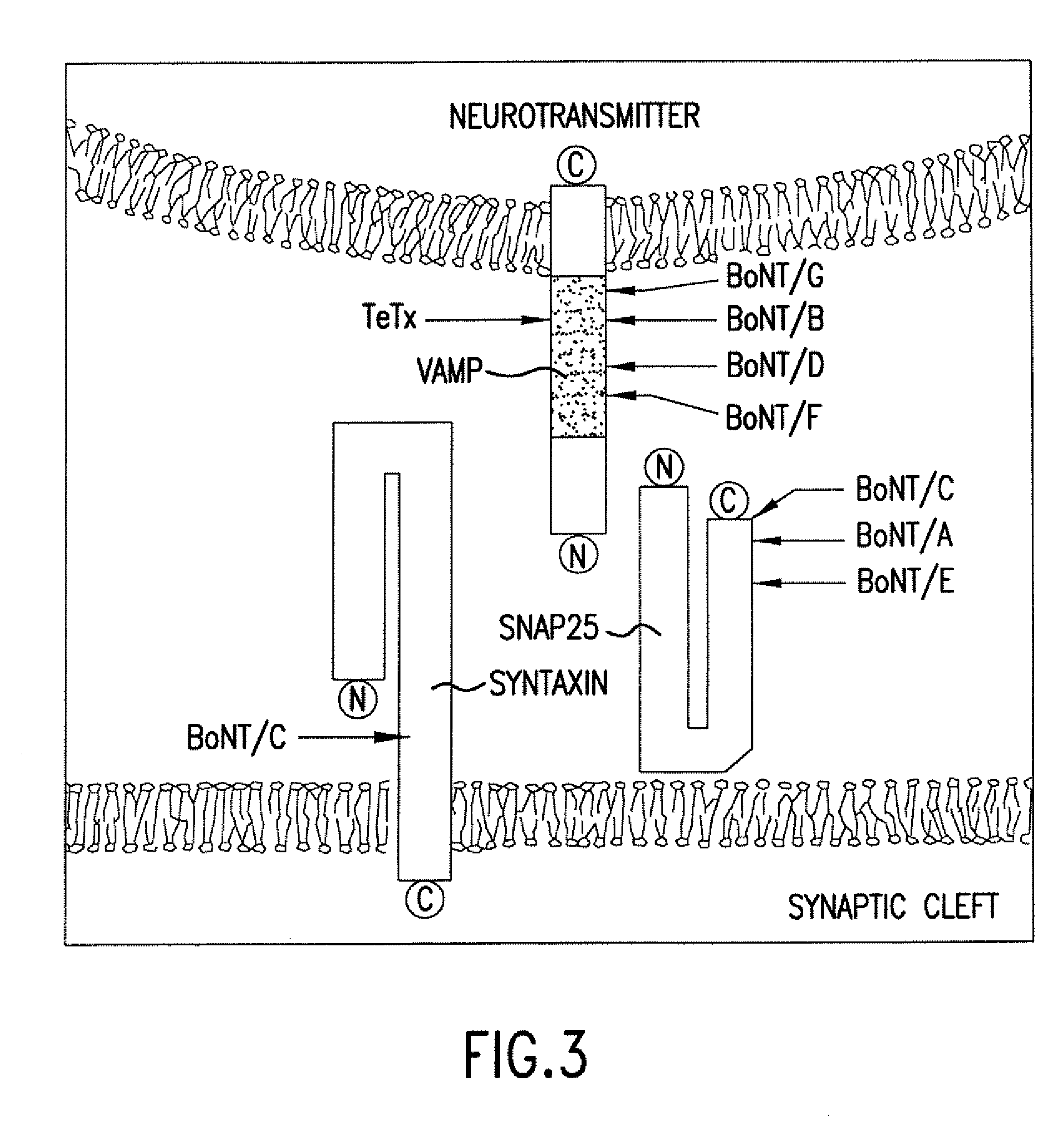Cell-based fluorescence resonance energy transfer (FRET) assays for clostridial toxins
a cell-based, fluorescence resonance energy transfer technology, applied in the field of fluorescence resonance energy transfer and protease assays, can solve the problems of lack of specificity, large number of laboratory animals required, cost, etc., and achieve the effect of reducing the ratio of contacted cells, increasing donor fluorescence intensity, and reducing the number of acceptors
- Summary
- Abstract
- Description
- Claims
- Application Information
AI Technical Summary
Benefits of technology
Problems solved by technology
Method used
Image
Examples
Embodiment Construction
[0030] The invention provides in vivo and in vitro cell-based assays for determining the presence or absence of an active clostridial toxin in a sample or for determining the activity of any clostridial toxin, including botulinum toxins of all serotypes and tetanus toxins. The novel substrate compositions, cells and assays of the invention reduce the need for animal toxicity studies, yet serve to analyze multiple toxin functions, namely, binding and cellular uptake of the toxin, translocation into the cell cytosol, and protease activity. These novel compositions and methods can be used to analyze crude and bulk samples as well as highly purified dichain toxins or formulated toxin products and, furthermore, are amenable to automated high-throughput assay formats.
[0031] As discussed below, fluorescence resonance energy transfer (FRET) is a distance-dependent interaction between the electronic excited states of two molecules in which excitation is transferred from a donor fluorophore ...
PUM
| Property | Measurement | Unit |
|---|---|---|
| fluorescence lifetime | aaaaa | aaaaa |
| concentration | aaaaa | aaaaa |
| concentration | aaaaa | aaaaa |
Abstract
Description
Claims
Application Information
 Login to View More
Login to View More - R&D
- Intellectual Property
- Life Sciences
- Materials
- Tech Scout
- Unparalleled Data Quality
- Higher Quality Content
- 60% Fewer Hallucinations
Browse by: Latest US Patents, China's latest patents, Technical Efficacy Thesaurus, Application Domain, Technology Topic, Popular Technical Reports.
© 2025 PatSnap. All rights reserved.Legal|Privacy policy|Modern Slavery Act Transparency Statement|Sitemap|About US| Contact US: help@patsnap.com



